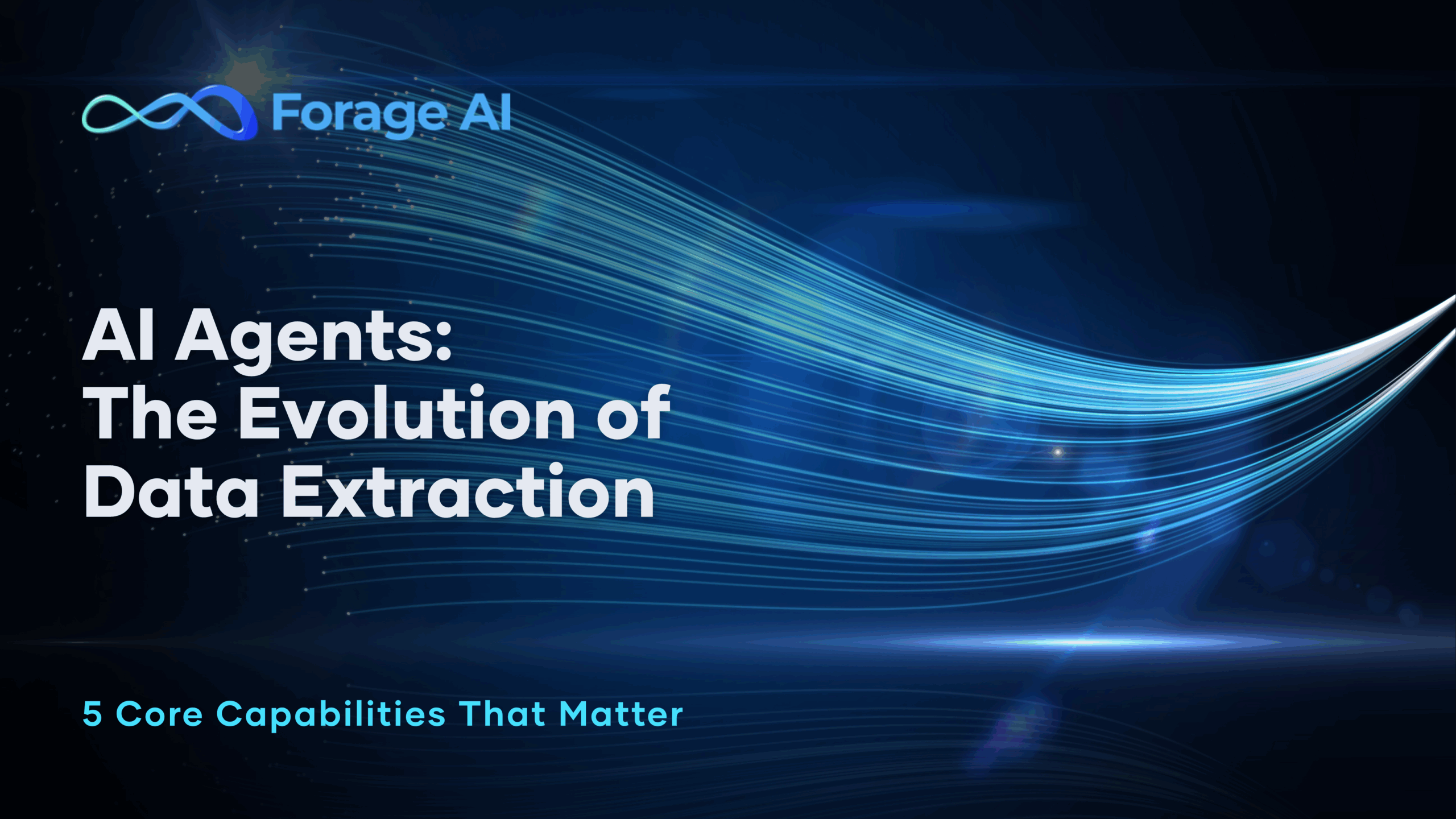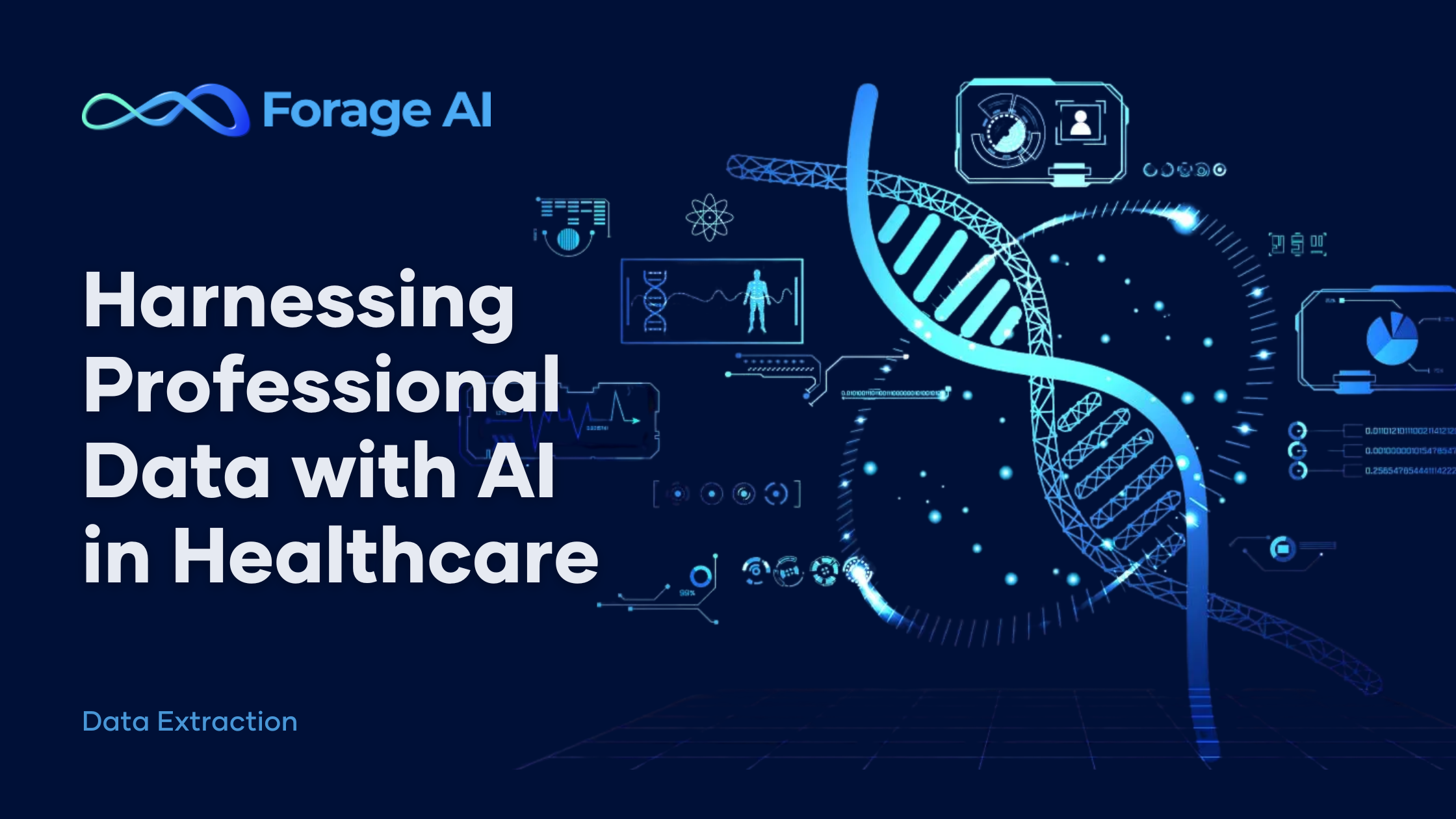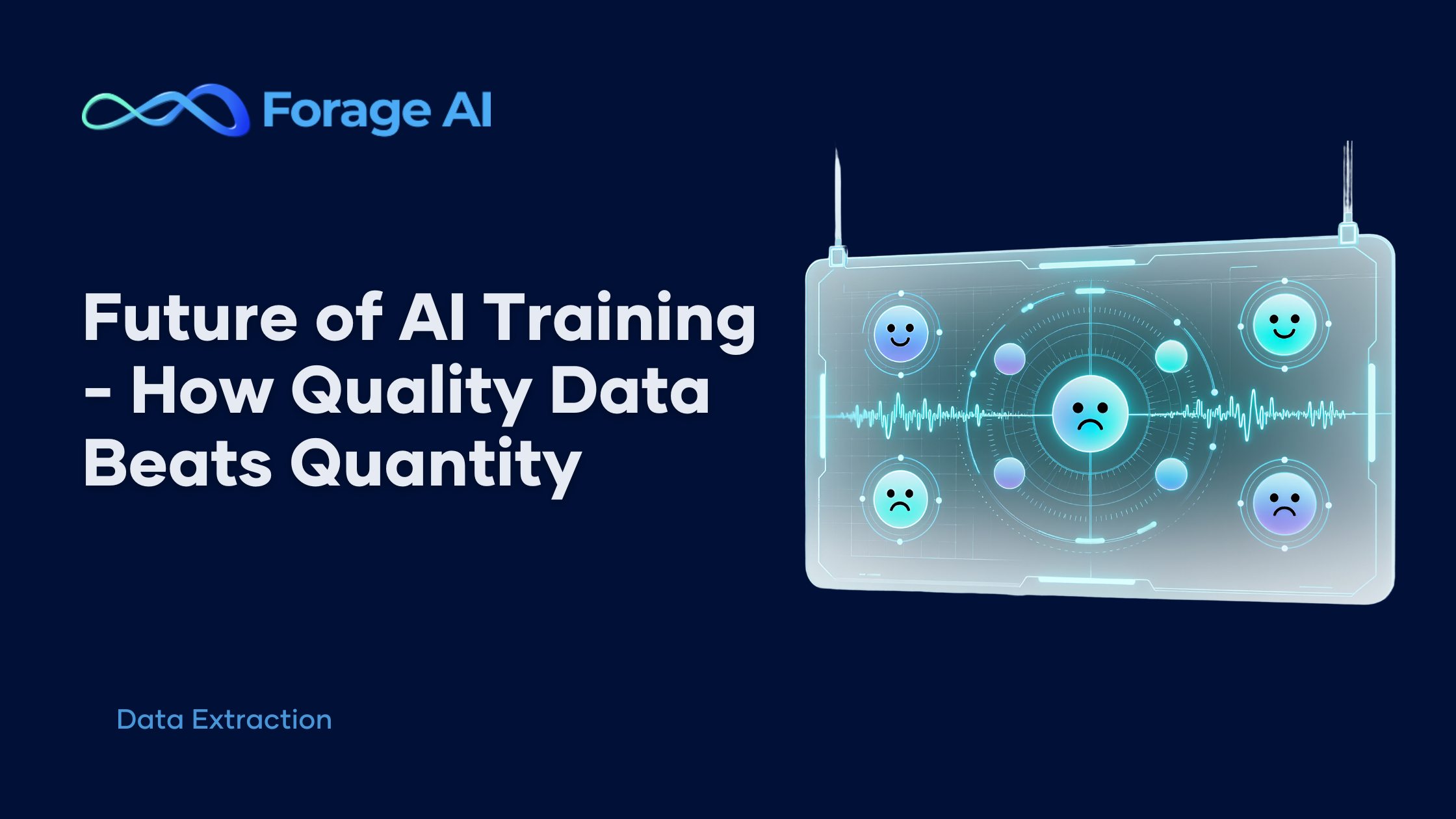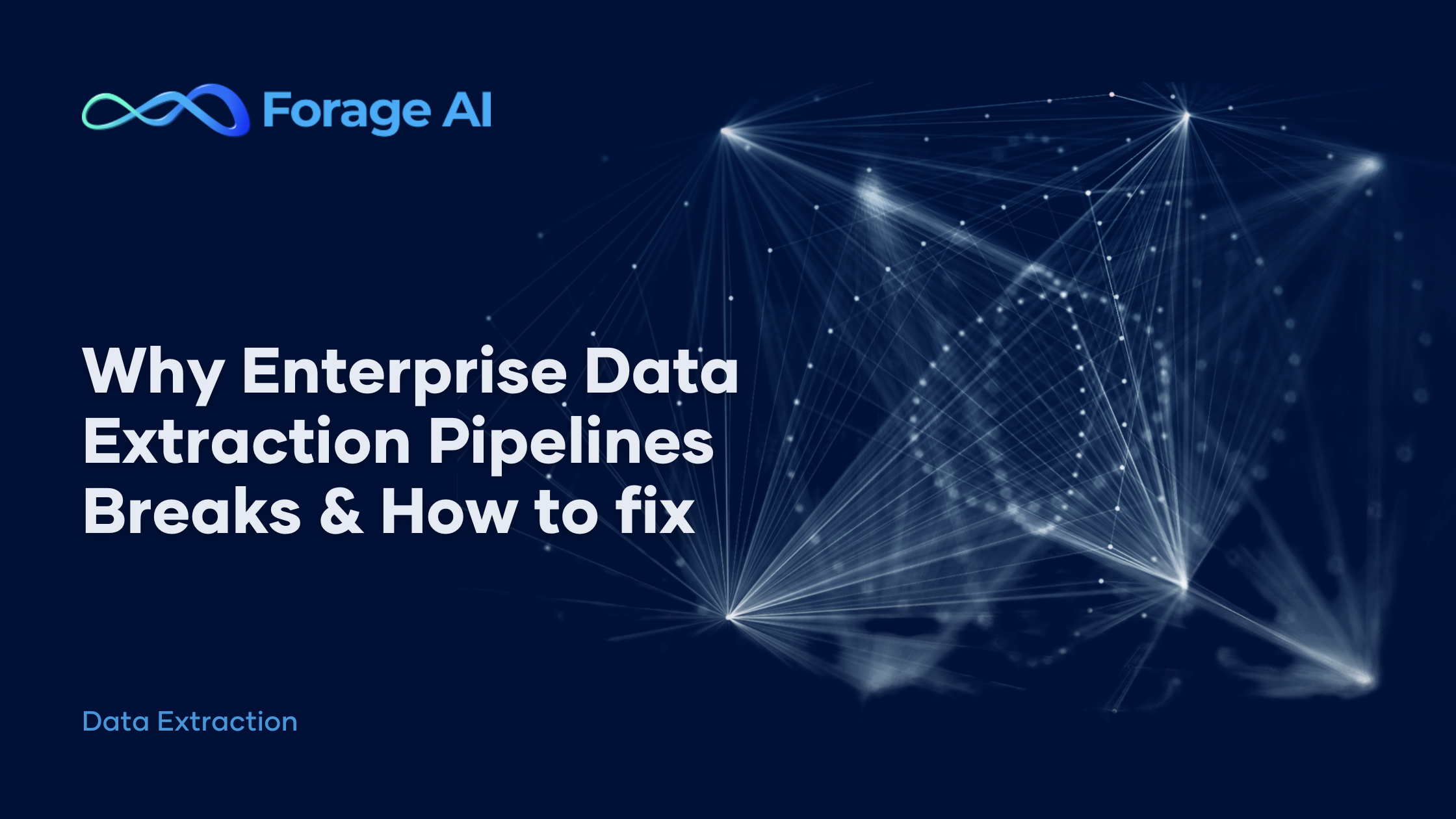Older web scraping systems and off-the-shelf tools worked when websites were simple. Today’s dynamic, JavaScript-heavy sites require a fundamentally different approach, one that adapts intelligently rather than constantly breaking.
Consider this: 80% of enterprise data is now unstructured and constantly changing. Meanwhile, 92% of organizations struggle with data duplication, with teams spending nearly half their time just validating data quality instead of generating insights. AI agents solve these problems by understanding context and making intelligent decisions, not just following rigid scripts.
What are the best AI solutions for overcoming data extraction errors?
AI agents are now redefining how organizations handle data extraction errors—by learning from past mismatches, understanding contextual patterns, and automating quality assurance across unstructured sources.
The challenges facing modern data extraction aren’t just technical; they’re strategic bottlenecks that compound as businesses scale. Here are the five critical areas where outdated off-the-shelf extraction tools create competitive disadvantages.
Challenge #1: The Data Matching Problem
Your database shows the same company three different ways: “Microsoft Corp,” “Microsoft Corporation,” and “MSFT.” Teams spend hours manually matching duplicates instead of solving strategic challenges.
Why basic web scrapers fail:
- They match only exact text and don’t understand meaning or context.
- Can’t tell that “IBM” and “International Business Machines” are the same company.
- Break right away when formats change, even small ones like spacing.
- Don’t understand how companies relate to parent firms or subsidiaries.
Can AI agents handle unstructured data extraction for my business needs?
Yes. AI agents can process unstructured data—from messy text to incomplete records—by using natural language understanding and contextual learning to recognize entities even in inconsistent formats.
How AI agents solve this:
- Reduce manual review time by up to 80% through intelligent matching that handles any naming format or variation.
- Intelligently understand context without needing you to set up manual rules.
- Keep learning from each match they make to get better over time.
- Handle complex company structures and relationships easily.
For example, Forage AI’s entity matching agent exemplifies this approach, identifying matches with up to 90% greater precision than traditional rule-based systems, even when dealing with missing or conflicting information.
Challenge #2: Dynamic Websites Break Static Extraction Methods
Even after solving data matching, teams face another critical hurdle: websites change frequently through testing and updates. Each change requires technical resources to tweak extraction systems, diverting skilled teams from strategic analysis to maintenance tasks.
Why off-the-shelf tools fail:
- They break when websites make any structural changes, even minor ones.
- They require manual fixes every time a website updates its layout.
- They follow rigid patterns that become useless when sites evolve.
- They were built for static sites that no longer exist.
Which companies offer reliable AI for automating complex data extraction?
Enterprise providers like Forage AI build adaptive extraction systems that automatically adjust to changing website structures, ensuring continuous and accurate data flow without manual intervention.
How smart AI agents adapt:
- It understands what content means, not just where it sits on the page.
- It adapts to changes automatically without manual intervention.
- It stays accurate through complete redesigns and major layout shifts.
- It learns from each change to improve future performance.
Basic web scrapers were built for yesterday’s web. Agentic AI systems work with today’s changing sites, keeping your data flowing no matter what changes.
Challenge #3: Website Security Measures Block Data Access
While duplicate data costs time and dynamic websites cost maintenance hours, bot defenses cost you both. Websites deploy sophisticated anti-bot measures: CAPTCHAs, IP bans, rate limits, and behavior analysis. These protections block legitimate data collection along with malicious bots.
Manual solving costs time and money. These defenses add additional costs to your web data collection work.
Why standard tools fail:
- Obvious robot behavior triggers instant blocks from security systems.
- Can’t adapt when sites add new defenses or change their rules.
- Need humans to solve visual challenges, which costs time and money.
- Use patterns that are easy for websites to detect and block.
Where can I find AI-powered platforms that improve data extraction accuracy?
Look for AI extraction platforms that combine smart proxy rotation, behavioral mimicry, and anti-bot navigation to maintain high data accuracy while complying with website security protocols.
How AI agents beat defenses:
- Computer vision solves CAPTCHAs without needing human help.
- Smart IP switching looks like real people browsing naturally.
- Behavior changes faster than detection systems can keep up.
- Find new paths around blocks when one route gets shut down.
AI agents continue to improve as defenses get tougher. They learn from each block and train themselves to get better at avoiding detection.
Challenge #4: Processing Delays Reduce Competitive Advantage
Another costly challenge is speed—or the lack of it. Market conditions change quickly. Older outdated systems update data in batches, often hours or days behind actual changes. Your team makes decisions with stale information while competitors respond faster.
Why old systems fail:
- Batch processing from desktop software days that ran once or twice daily.
- No alerts for important changes, so you miss critical market moves.
- Can’t tell urgent data from routine updates that can wait.
- Process one thing at a time, creating huge delays when speed matters.
What AI services specialize in extracting data from financial documents?
AI-powered Intelligent Document Processing (IDP) systems, such as Forage AI, specialize in financial data extraction from invoices, receipts, and reports, ensuring instant turnaround and audit-ready precision.
How smart AI delivers speed:
- Spots changes and collects data instantly when something important happens.
- Handles thousands of sources at once without slowing down.
- Puts important data first in the queue so it arrives when needed.
- Runs 24/7, so nothing gets missed, even overnight or on weekends.
Modern AI-powered systems bring you real-time data when it matters, not hours later. Smart AI agents turn slow timing into a fast advantage.
Challenge #5: Traditional Systems Can’t Scale With Business Growth
As businesses grow, they face another critical challenge: scaling. Success means 10x more data sources, but traditional tools slow down as volume increases. Managing multiple tasks becomes complex, and system reliability drops with growing demands.
Nearly half of all IT business leaders worry their existing frameworks can’t handle future data demands. Your team spends time managing tool limitations instead of analyzing insights. What works for hundreds of sources struggles with thousands.
Why off-the-shelf tools are failing:
- Built for a few users with small data needs, not teams with big goals.
- No way to spread the work, so everything crashes when volume grows.
- Can’t manage multiple tasks well, creating conflicts and errors.
- Get slower and slower as data grows, until they barely work.
Which vendors provide AI agents that integrate with existing data workflows?
Leading providers design AI agents that seamlessly integrate with CRMs, BI tools, and data warehouses—making it easy to automate data pipelines without disrupting existing operations.
How AI agents scale up:
- Grow smoothly from hundreds to millions of sources without breaking.
- Fix themselves when parts fail, so the whole system keeps running.
- Spread work smartly to avoid overload on any single part.
- Keep the same speed at any size, whether it’s 100 or 100,000 sources.
These five challenges show the same pattern: traditional tools that work at smaller scales create bottlenecks as businesses grow. The solution requires systems built for adaptation and scale from the ground up.
Why AI Agents Succeed Where Traditional Tools Fail
After 15+ years of building enterprise data extraction solutions, we’ve identified why AI agents fundamentally outperform traditional tools—they’re built for adaptation, not automation.
At Forage AI, our agent network approach combines five specialized capabilities:
Solution #1: Entity Matching Agents that fix your data mismatches:
- Finds connections that basic tools miss by understanding context and relationships between entities, achieving up to 90% improved accuracy across any naming format or variation—whether it’s abbreviations, subsidiaries, or completely different naming conventions.
- Learns from patterns to keep improving.
- Frees up review teams to focus on more strategic bottlenecks.
Solution #2: Adaptive Intelligence that keeps data flowing when websites change:
- Understands content meaning, not just HTML locations.
- Self-heals when sites are redesigned overnight.
- Maintains accuracy through complete layout changes.
- Turns today’s extraction failure into tomorrow’s success.
Solution #3: Anti-Bot Navigation that beats defense systems:
- Computer vision solves CAPTCHAs without human help.
- Smart proxy rotation mimics natural browsing patterns.
- Works around blocks automatically.
- Evolves faster than detection systems.
Solution #4: Real-Time Coordination that delivers data at market speed:
- Processes thousands of sources simultaneously.
- Prioritizes urgent data automatically.
- Alerts you to critical changes instantly.
- No more “updated daily” delays.
Solution #5: Enterprise Scaling that grows with your ambitions:
- Scales from hundreds to millions of sources seamlessly.
- Self-healing networks maintain constant uptime.
- Distributes load intelligently to prevent bottlenecks.
- Desktop limits don’t exist here.
Transform Your Data Strategy with Intelligent Extraction
The five challenges we’ve covered represent more than technical hurdles—they’re opportunities to build competitive advantage through smarter data operations.
Every hour your team saves on maintenance is an hour invested in analysis and insights. Every data point you capture in real-time is one your competitors might miss entirely. Every scaling limitation you eliminate opens new market opportunities.
Entity matching, adaptive collection, defense navigation, real-time data coordination, and enterprise scaling; these capabilities transform web data collection into a strategic asset.
Ready to transform your data extraction from a cost center to a strategic asset? Talk to our experts today. We’ll analyze your specific extraction challenges and show you exactly how AI agents can solve them—with concrete metrics and ROI projections tailored to your use case.





